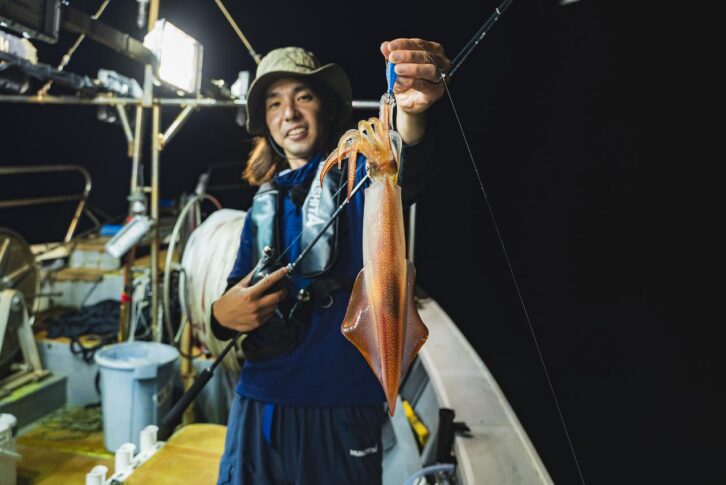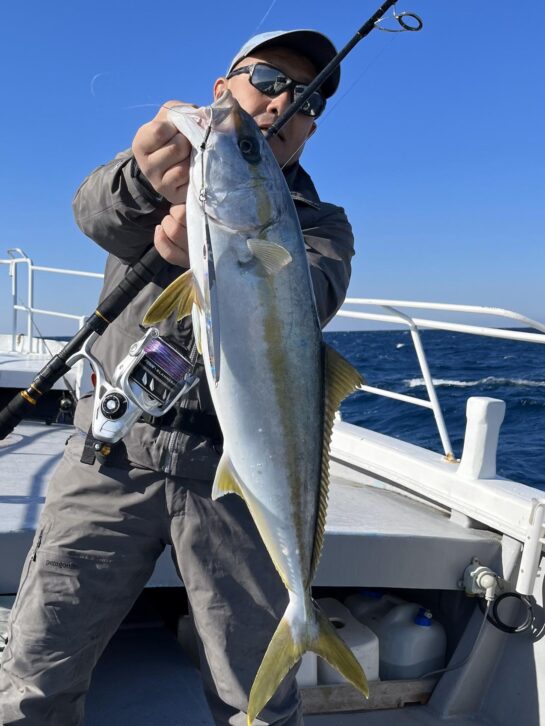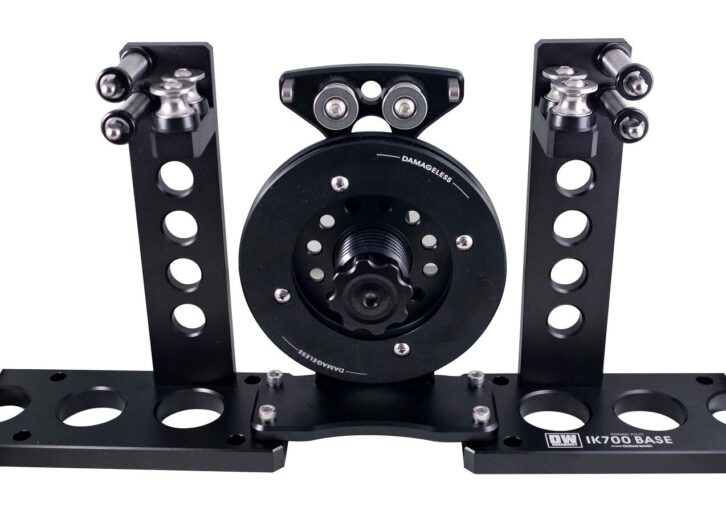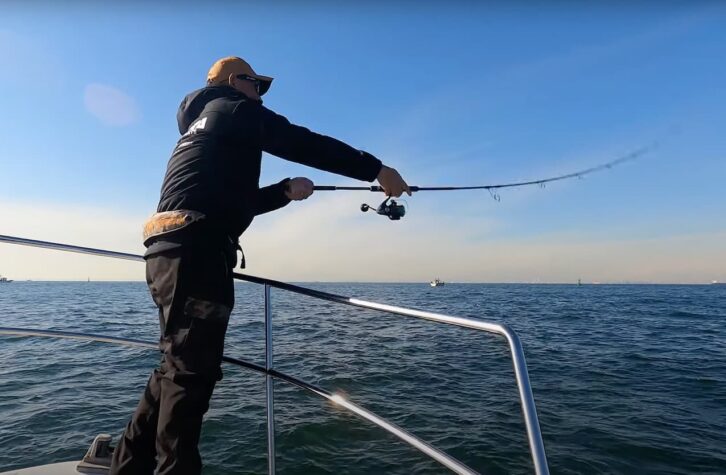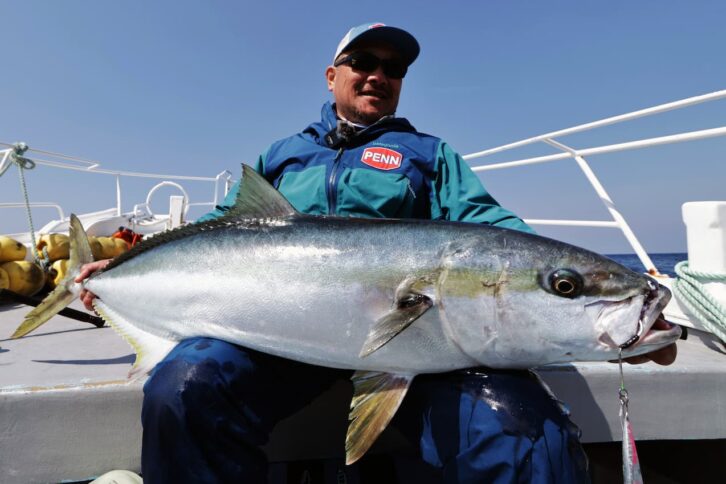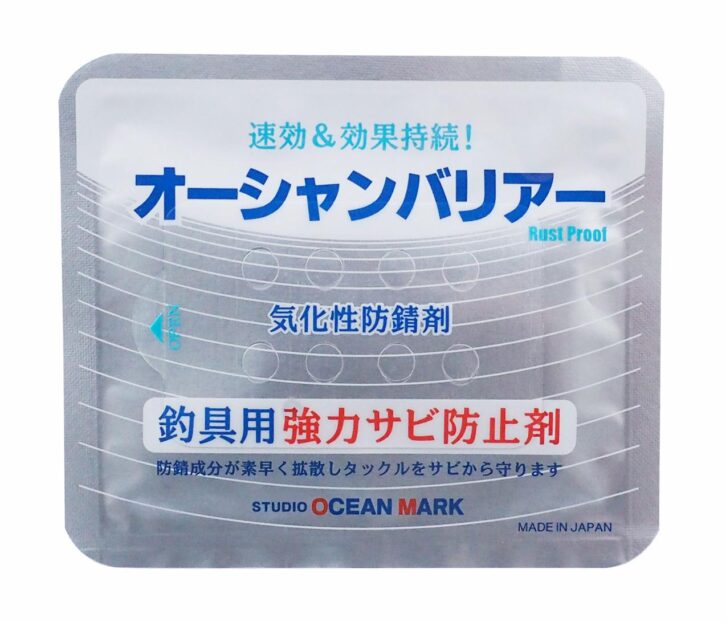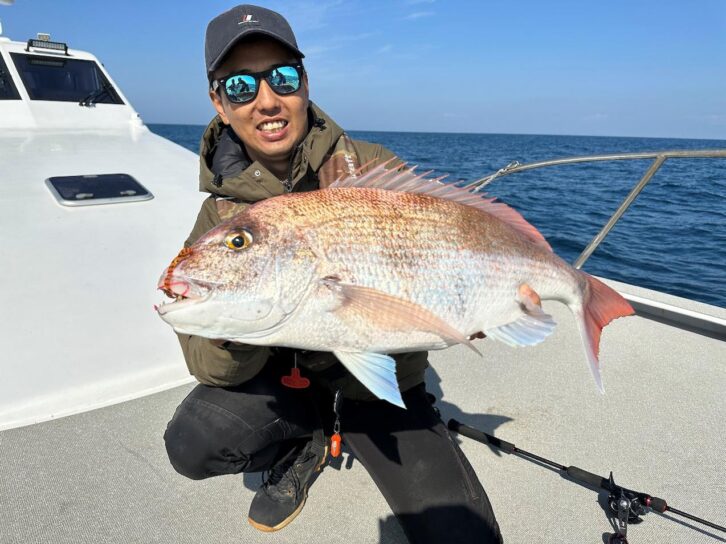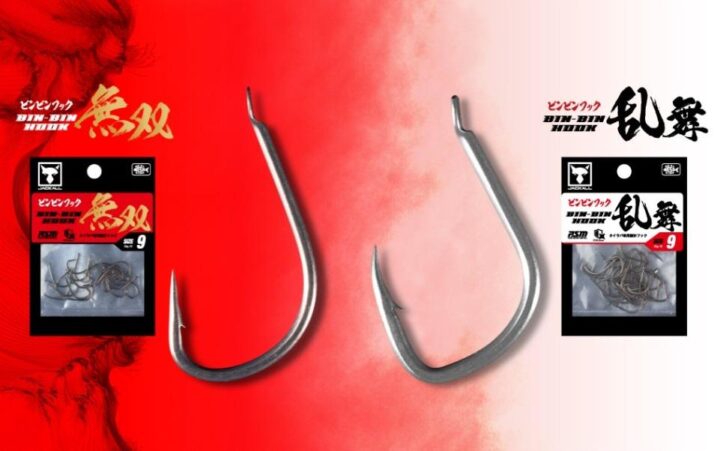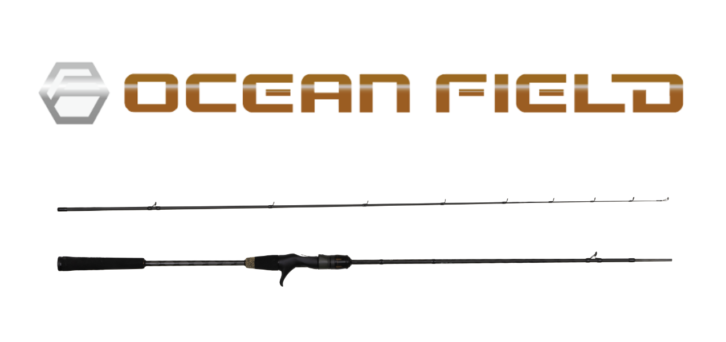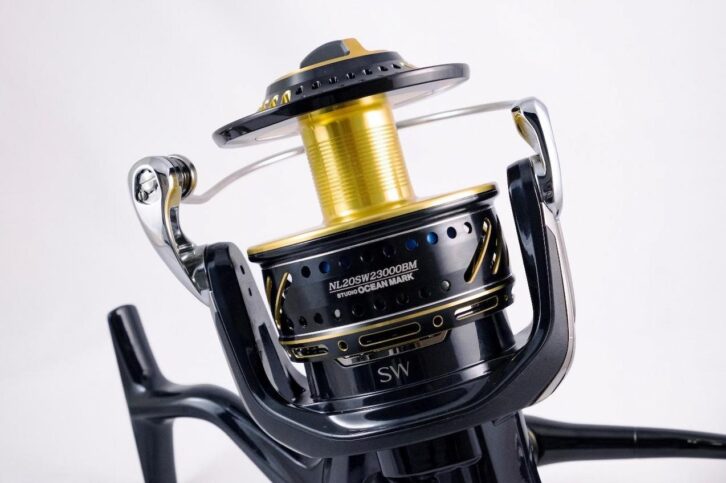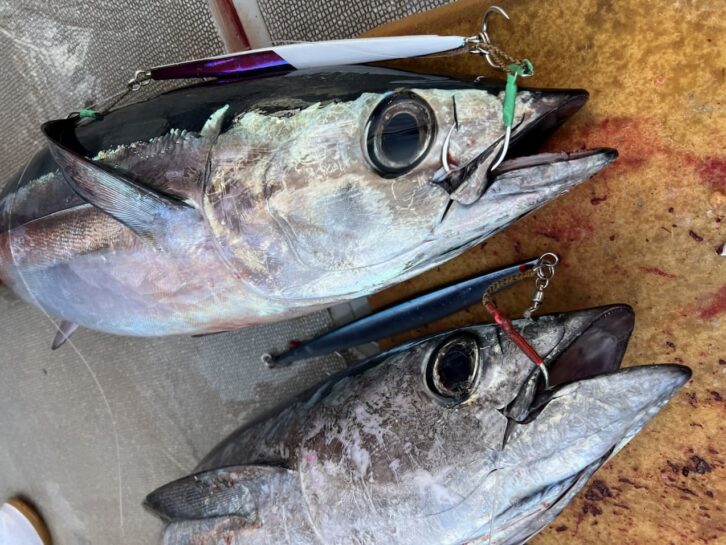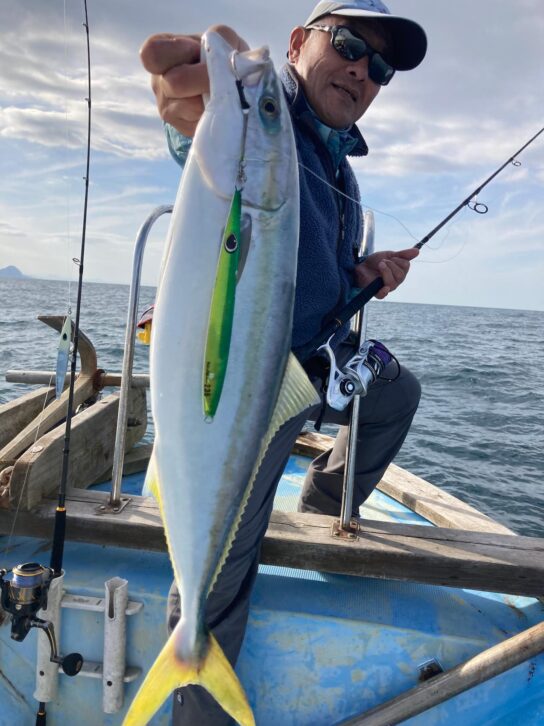This year is going well! A premonition of a good year. Numerous catches already!
Sagami Bay, hot game from August! Bonito & Yellowfin Jigging & Ebing
In Sagami Bay, koma-se fishing for skipjack and yellowfin tuna starts in August. Depending on the boat, you can target skipjack and yellowfin tuna by jigging or ebing at their miyoshi. Casting for yellowfin and bonito with lures comes to mind, but jigging and ebing fishing is hot only in Sagami Bay. It is also an easy fishing challenge for anyone. Here are some tips on tackle and targeting.
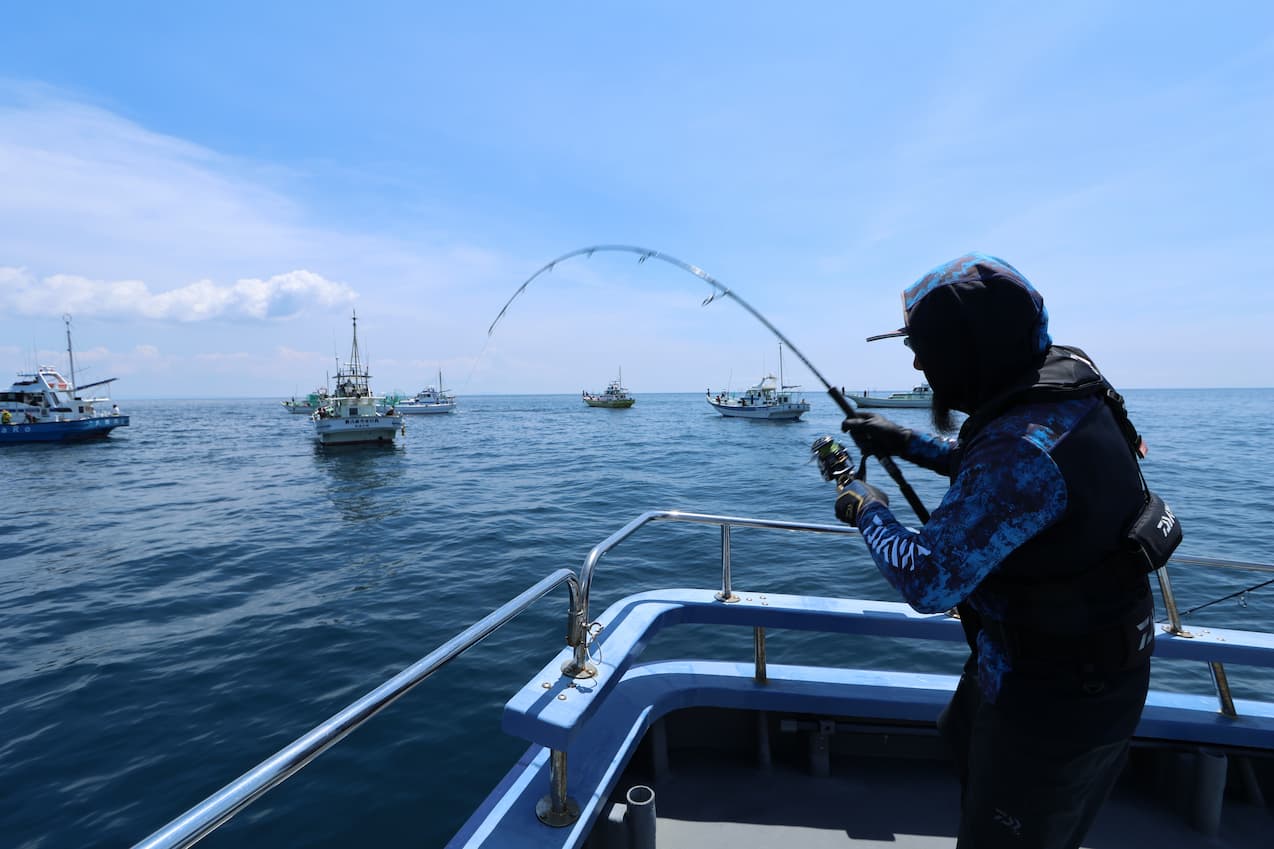

Fleets of boats form at the fishing grounds. The photo was taken on August 1, so the number of boats is still small, but during the peak season, the number of boats is surprisingly large. The fish movements are tracked by sonar and the boats switch places as the fish move.
INDEX
Jigging and Ebing Unique to Sagami Bay
Bonito and yellowfin tuna are summer fish on the Pacific side of Honshu. Both are targets that can be targeted by plug casting, and the style of shooting plugs by chasing schools of fish with a boat or looking for nabura or toriyama (birdhouses) has a hunting element that makes anglers passionate about fishing. In Sagami Bay, however, skipjack and yellowfin tuna fishing is a different kind of fun. That is jigging and ebing on the bridge of a skipjack and tuna boat using koma-see.
The ban on koma-se fishing for skipjack and yellowfin tuna in Sagami Bay opens on August 1. At the same time as the ban is lifted, passenger boats depart from various places in Sagami Bay. However, the areas where yellowfin and bonito arrive gradually become more limited, and by scattering koma-sei every day, anglers are able to find a response with a higher probability. However, this does not mean that anyone can catch yellowfin tuna and bonito easily.
Incidentally, dozens of fishing boats gather at the koma-see point. In the fleet, each boat turns its boat ahead of the school, and signals the cast by placing its boat on top of the reaction. If the school is moving fast, they may drop to the depths and fish for a few seconds before giving the signal to move on. Even though it is koma-se fishing, a heated battle unfolds here.
In this article, we will discuss jigging for skipjack and yellowfin tuna on board a boat with koma-sei fishing line. Many boats open up their miyosi to luremen, and while the jigging is mainly for skipjack, yellowfin can sometimes be a hit. Ebing, on the other hand, targets both yellowfin and bonito. In the narrow space of the meyoji, the fish that hits the boat is tamed on the spot as much as possible, leading to the landing of the fish. Techniques to make the fish react in the koma-set and tackle selection to control the hit fish are important.
Another advantage of this game is that you can enjoy it aboard a boat. When casting for skipjack, you can target them on a shared boat with a dolphinfish boat depending on the timing, but for yellowfin, there are few shared boats available, so you will have to challenge yourself on a private boat. Because of the high cost of a charter boat, it is difficult for a single angler or a couple of friends to easily go fishing. However, if you are fishing on the same boat, you can easily target yellowfin tuna and skipjack tuna, although the fishing methods are limited. Moreover, jigging and ebing are in good demand this fiscal year 2024.
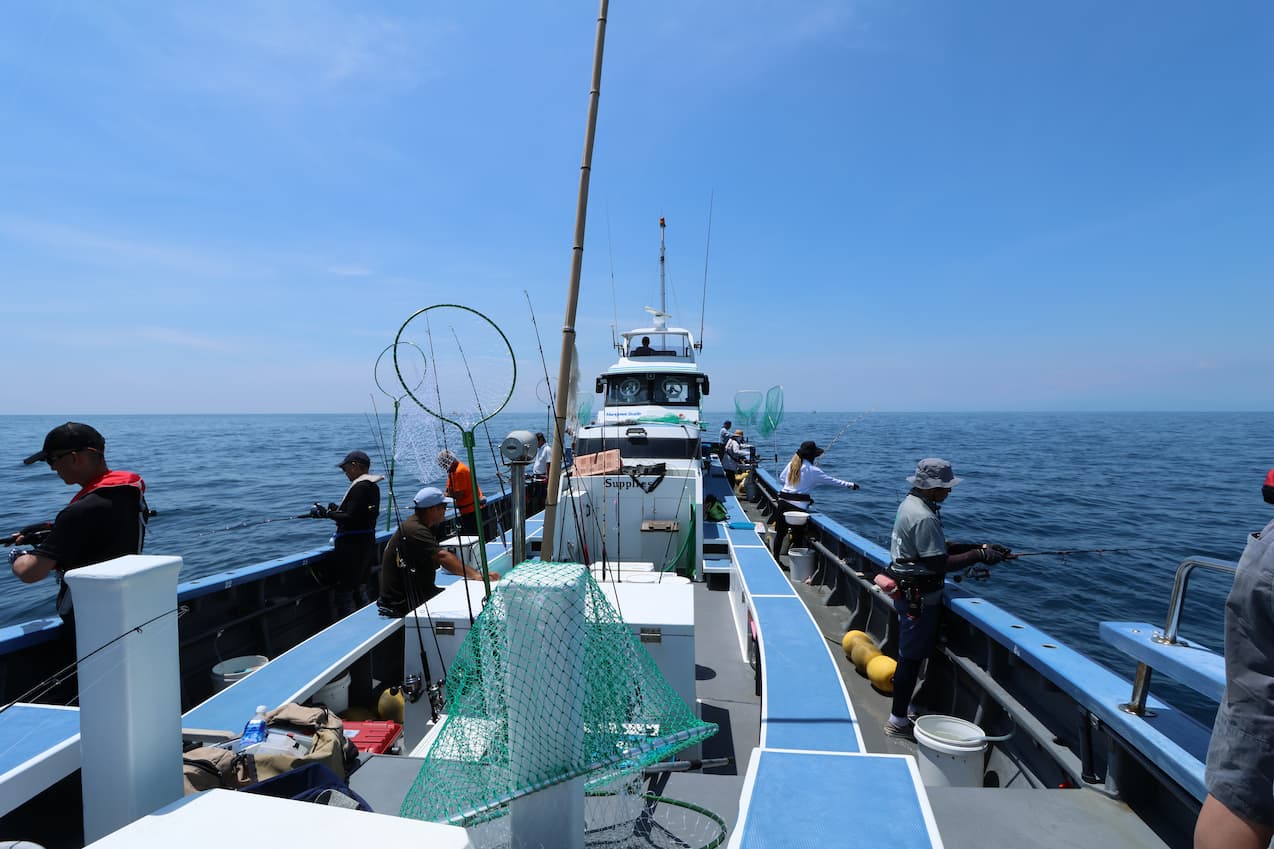
A komase skipjack and yellowfin tuna boat that frees up the miyoshi for the lure fishermen. The rear of the boat is occupied by bait fishermen fishing with thick lines, so it is necessary to control the movement of the fish well after they hit the water. Jigging with a thin line can lead to a line break if the fish gets stuck.
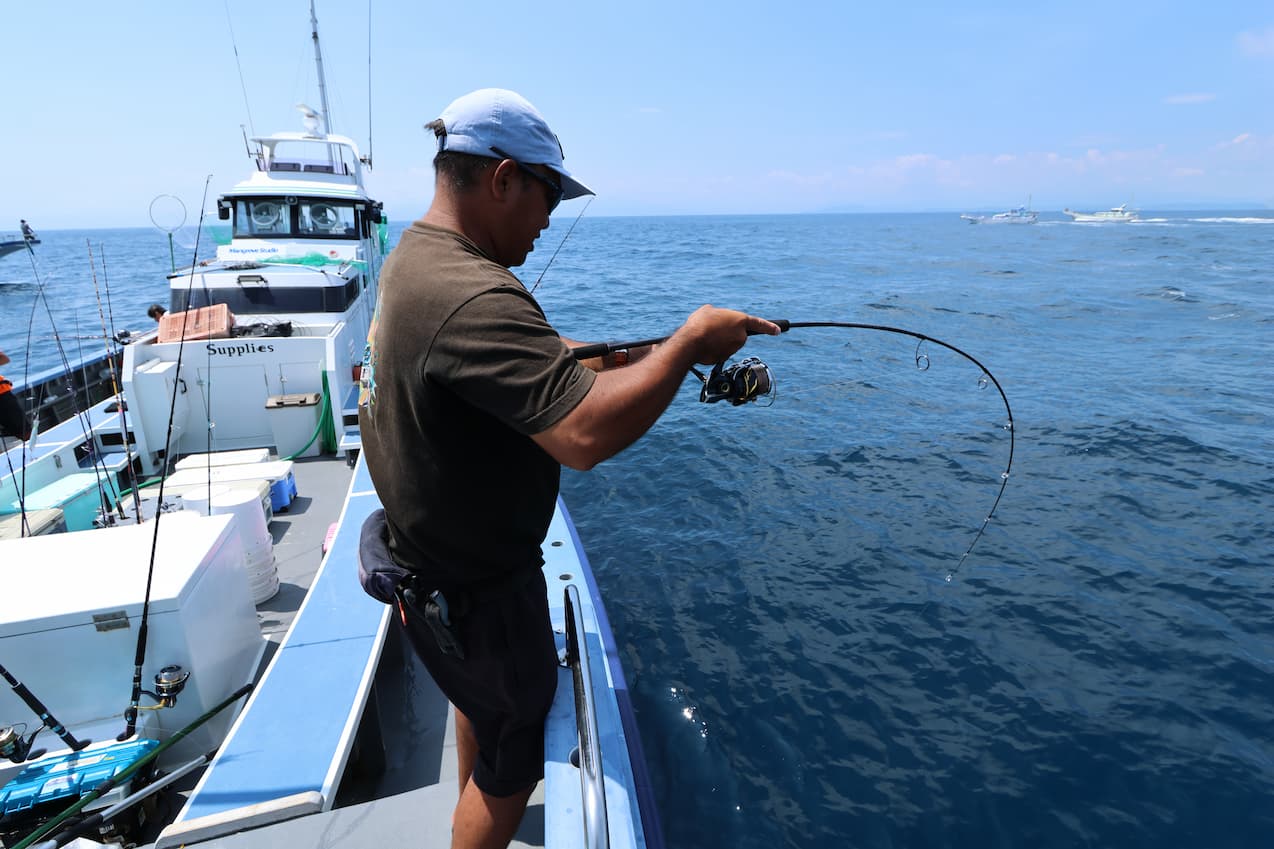
Tighten the drag as much as possible without breaking the line, and try to take the initiative as much as possible. Reels and rods should be solid.
Jigging tackle for skipjack and yellowfin tuna
When jigging, skipjack are rather the main target. Bonito are fighters, running from place to place after being hit, and then making a sharp plunge. You have to “firmly” control such a fish at the water’s edge. The reason I wrote “firmly” is because there are many komaeshi anglers with thick lines on the line outside of the bridge. If you get into a fight with such a line, the jigging line will first get wound up, or worse, the line will break.
When targeting with a jig, the line may land on the koma-sei, and bait other than koma-sei, such as sardines, may land on it. In any case, targeting with a small jig is most effective. The size of the jig should be 50 to 80g. If the bite is slow, 50g is the best size. The jig should be quickly lowered to the dana indicated by the captain, and then the angler should start pulling the jig. For this reason, PE No. 2 line is considered appropriate. A thinner line can sink the jig even more quickly, but it will not be able to withstand the sharp thrust of a bonito at the water’s edge. Conversely, a thicker line takes longer to sink, which is a disadvantage when fishing at a fast tempo. The reporter has enjoyed fishing this way for many years, and can say that No. 2 PE line is the best for skipjack. Incidentally, in order to prevent the fish from running backward from the reel, the drag value of the reel should be set to about 4 kg, and the fish will endure the pull of the reel to deal with the situation. This is powerful and thrilling. And as for tackle, a jigging rod that can handle this 4 kg of drag is necessary.
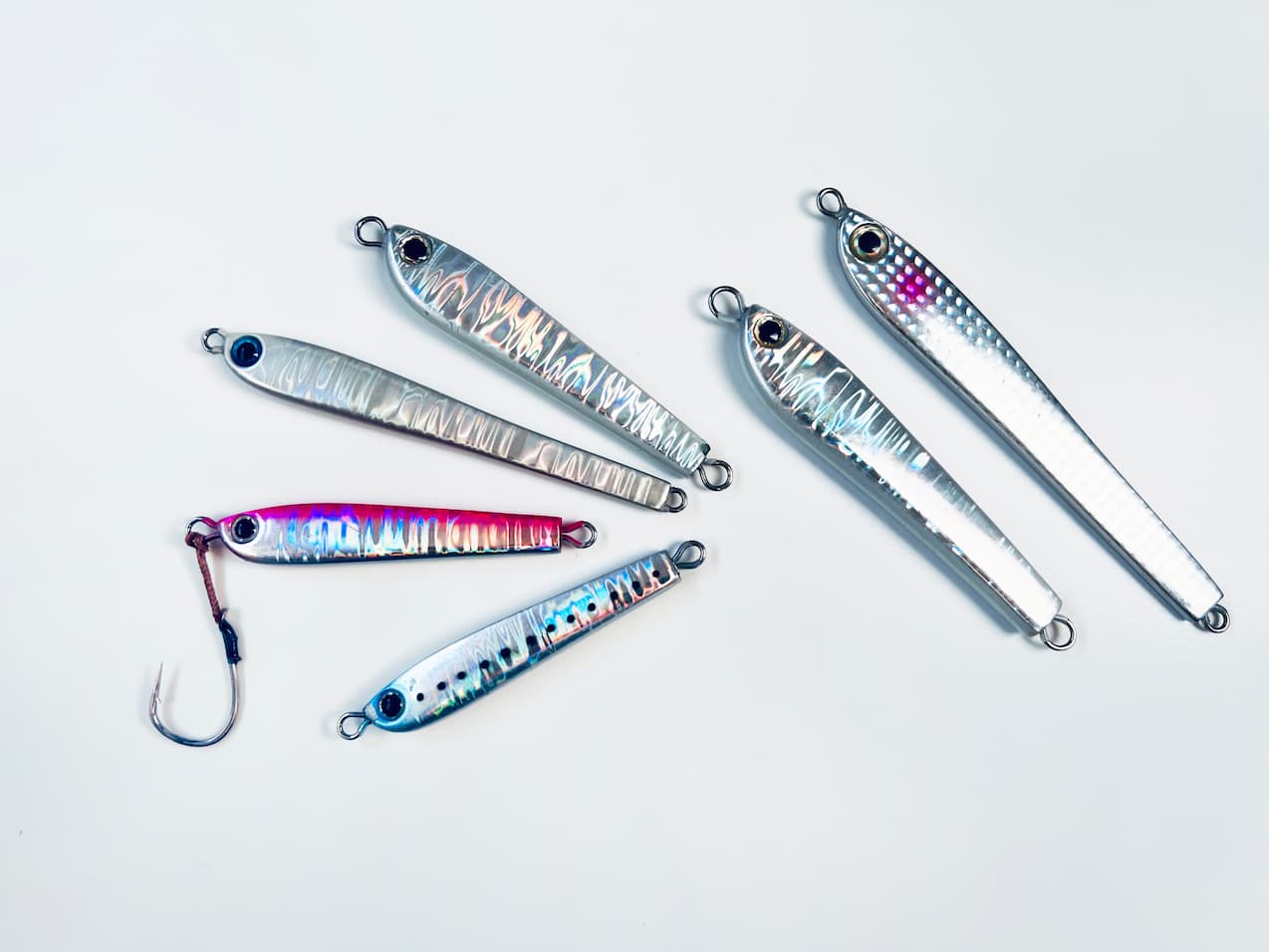

The main jigs used for skipjack are 50-80g. When yellowfin are present, a slightly heavier, larger silhouette is used. Pictured is the Surprise Blue Jack, which has had a lot of success. Short, standard, and each size should be prepared.
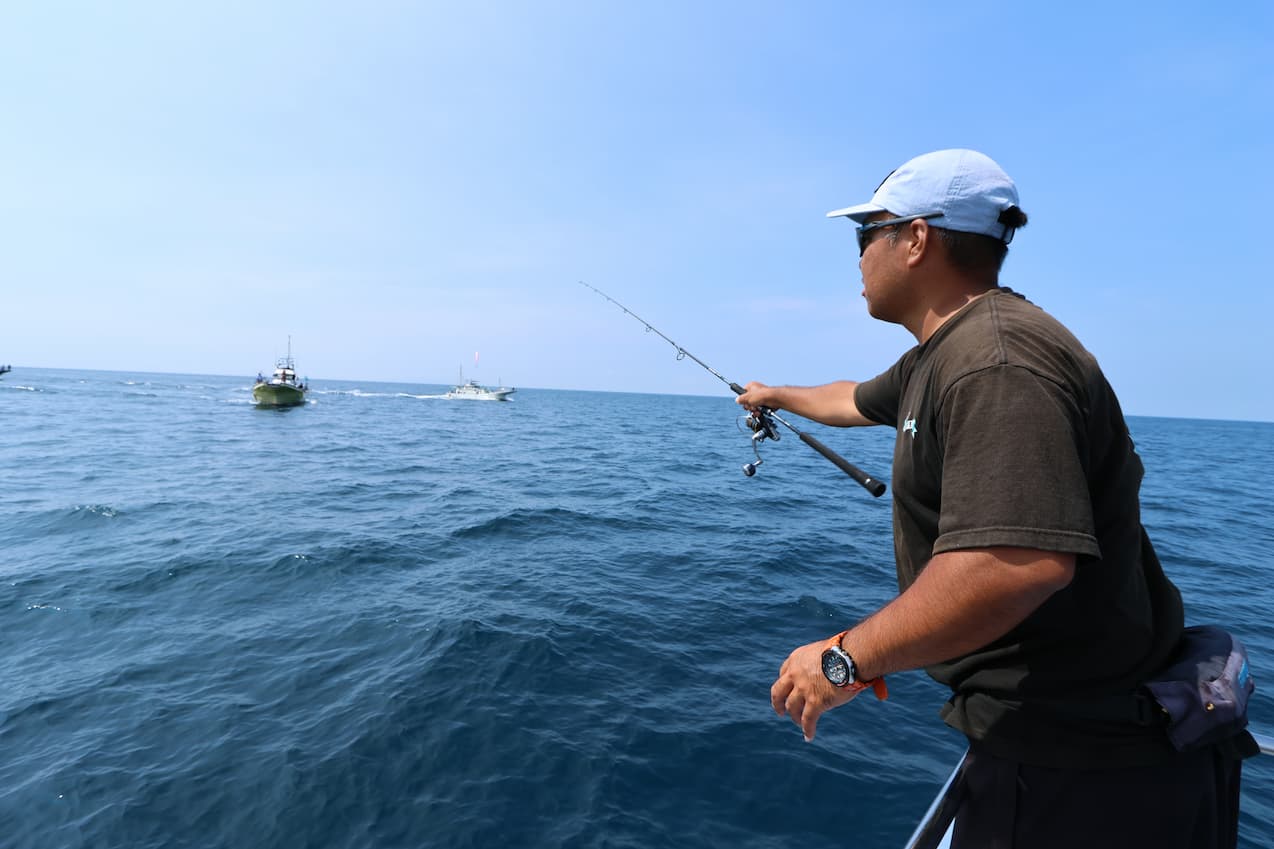
When the captain announces the depth of the water, drop the jig to about 10 meters below the depth and start fishing. Some captains adjust the position of the boat after the announcement, so watch for this habit and throw the jig lightly so that the line is directly under the boat when the captain announces the depth.
Mr. Kazuyoshi Sugio of Surprise, who goes jigging for skipjack and yellowfin tuna, uses a Shimano 2-power rod for skipjack and a 3-power rod for yellowfin tuna. If the reel is too small, it may not have enough power to reel in the fish. He should use a reel with a solid power level of at least 6,000. For skipjack, the best reel is No. 6000, and for yellowfin, No. 8000. High-gear type is best for quick jig operation.
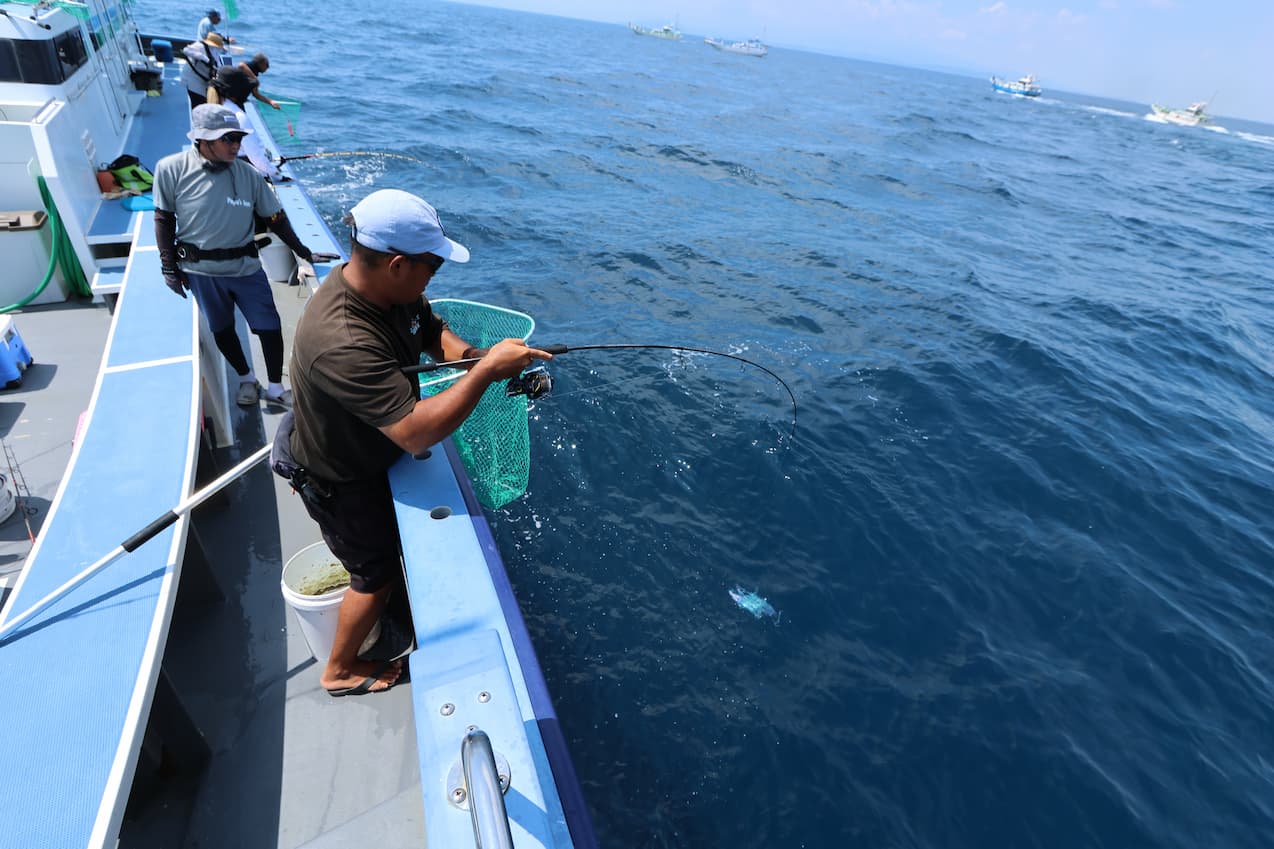
The rod should be powerful enough to withstand even a high drag using PE No. 2. Mr. Sugio, who frequently comes on board during the season, selects a Shimano Osia Jigger (Concept S and Quick Jerk) 2-power class for skipjack, and a 3-power when there is a possibility of yellowfin tuna.
For leader, No. 8 is good for skipjack, but No. 10 if there is a possibility of yellowfin tuna or yellowfin tuna hitting on the tackle. If you are targeting yellowfin tuna, we recommend using PE No. 3 with a No. 12 leader. The length should be about 4 fathoms long. This is to avoid the line from rubbing on the bottom of the boat when the skipjack run, and to avoid a break in the line crossing with customers who are fishing with komaeshi.
How to search for and fight with skipjack
The captain announces the depth to be explored and the signal to cast the jig, which may be 40 to 20 meters or around 40. If you are too slow, the school will pass by, so prepare your tackle just as the boat slows down and the signal is about to be given. It is fine to drop the jig directly under the boat, but it is important to know the captain’s habits on how to set the boat. Some boats move forward a little after giving the signal. In this case, the jig will drift backward and may get entangled with the komaeshi fishing traps. In such a case, throw the jig a little under in the forward direction to cope with the situation. Other miyoshi should also carefully observe the angle of the jigging line and cast the jig in such a way that it does not cross the line.
As soon as the jig lands on the water, sum the line and drop the jig. The boat is standing on a spanker. Therefore, on windy days, the boat will catch the wind from the waterline. In such a case, a lightly cast line bends backward greatly. To avoid this, we sum the line.
Then, the jig is dropped and when it reaches about 10 meters below the indicated dana, the angler begins to suck in the line. When you cast, the line is at an angle, so even with PE line, which is color-coded by meter, it is easy to lose the “Tanaboko” (the “Tanana” in Japanese), but you take into account the angle of the line and drop it down to the indicated “Danana. The fish may bite during this fall, so always keep thumbing the line to see the fish’s reaction. Once the fish has sunk to the bottom of the indicated depth, you should jerk up to lure the fish, but if you are targeting bonito, you should use a fast one-pitch jerk with no fall. The angler changes the speed and the width of the jerk to search for a pattern. It is also a good idea to match the movement style and jig size of the angler who is catching the most fish. If there is a nabura in front of you and you can reach it by casting underwater, skipping is also effective by quickly reeling the jig on the surface. You want to explore at a good tempo.
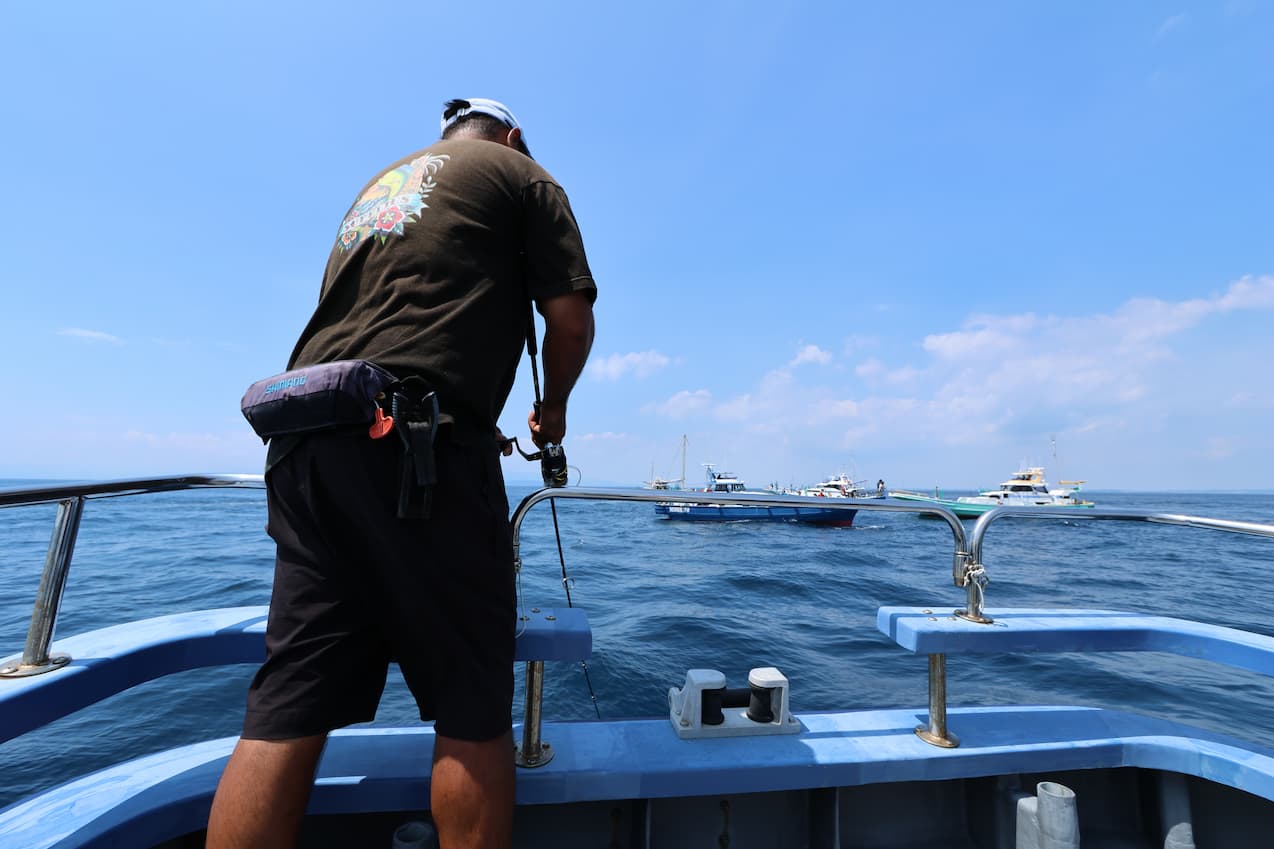
When targeting bonito, speed up the jerking speed. Use a fine one-pitch jerk to keep the tempo up.
After the fish hits, you should start fishing. When the fish hits, quickly give the angler an awase and move on to the fight. As mentioned above, control the fish so that it does not run behind the boat as much as possible. We don’t want to let the fish run and weaken before landing it. When the fish runs into the boat, we try to hold on to it. If you are likely to get into a fight with a neighboring lure fisherman, ask him to move to a different location. If the size of the fish is large enough to be pulled up, pull it out; if it is a good size (over 3 kg), reel it up to the surface, then guide it to a place one step down and have it scooped up with a net. If the person next to you is hooked and the captain or a helper is unable to come to the landing, grab the net and help him land the fish. After you catch the fish, immediately drain the blood out of the fish with a bucket. If the surrounding area is stained with blood, it is good manners to make sure it is washed away.

When the skipjack are moving, reel them in as fast as you can, and when they are running, hold on. Be careful not to let the line chafe on the bottom of the boat, as it may dive under the boat!
When not only skipjack but also yellowfin and yellowfin are in the mix, a jig size slightly larger than skipjack (80g, 90g, etc.) and a jig motion with a slight fall can also be effective. Look around and give it a try if you want to catch not only bonito but also yellowfin and yellowfin.
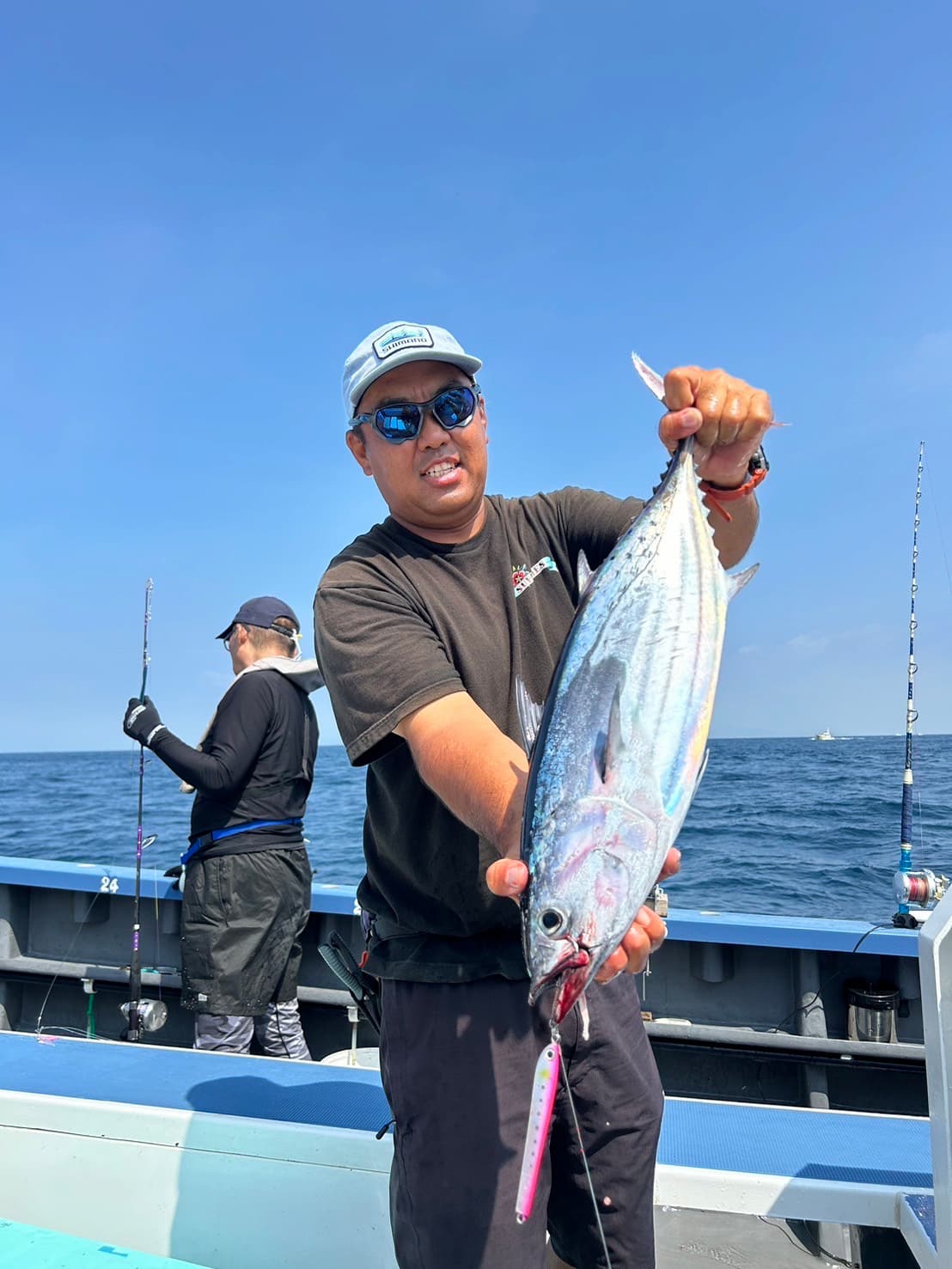
Average on the first day of the opening day; an individual weighing about 3 kg. Later on some days, many good-sized fish of 4 to 5 kg were hit. Bonito are doing well this year!

Exploring by Ebing Methods
In addition to casting and jigging, ebing is another way to target yellowfin tuna when lure fishing. Ebing is a fishing method developed by professional fisherman Masakai Murakoshi, inspired by the fishing method of fishermen on Kumejima Island, because the probability of catching yellowfin tuna on koma-sei is low when using a jig. The method involves tying a special straight line balance to the end of a leader and setting a metal jig. A worm is attached to the end of the balance, which is tied to a line with a Mutsu circle hook set on it. The angler shoves the worm and moves the worm on the end of the line to lure yellowfin tuna to bite. This is now a common method of fishing on the midges of komaeshi boats because it is easy to lure and also very catchable. Moreover, this season of 2024 can be said to be a good year for catching yellowfin tuna, with anglers catching fish right from the start of the season, so this could be a good opportunity.

Although ebbing was born on Kumejima Island, it has become a well-established lure fishing method in the miyoshi of this komaeshi fishing boat.
Ebing Tackle
Spinning tackle is mainly used for ebing. The captain of the boat drops the hook to 10 to 20 meters below the dana, and then the angler begins to suck up the hook from there. Basically, the rod end is placed against the belly, and the line is repeatedly reeled in with a single turn of the handle while the rod is lowered. The best jig to use at this time is one that attracts fish and has light resistance when being sucked in. A jig that slides may cause a fish to be swarmed, so a jig that moves in a straight line is best. The standard weight is 200g. Seikai Collection has special jigs on the market, which are recommended.
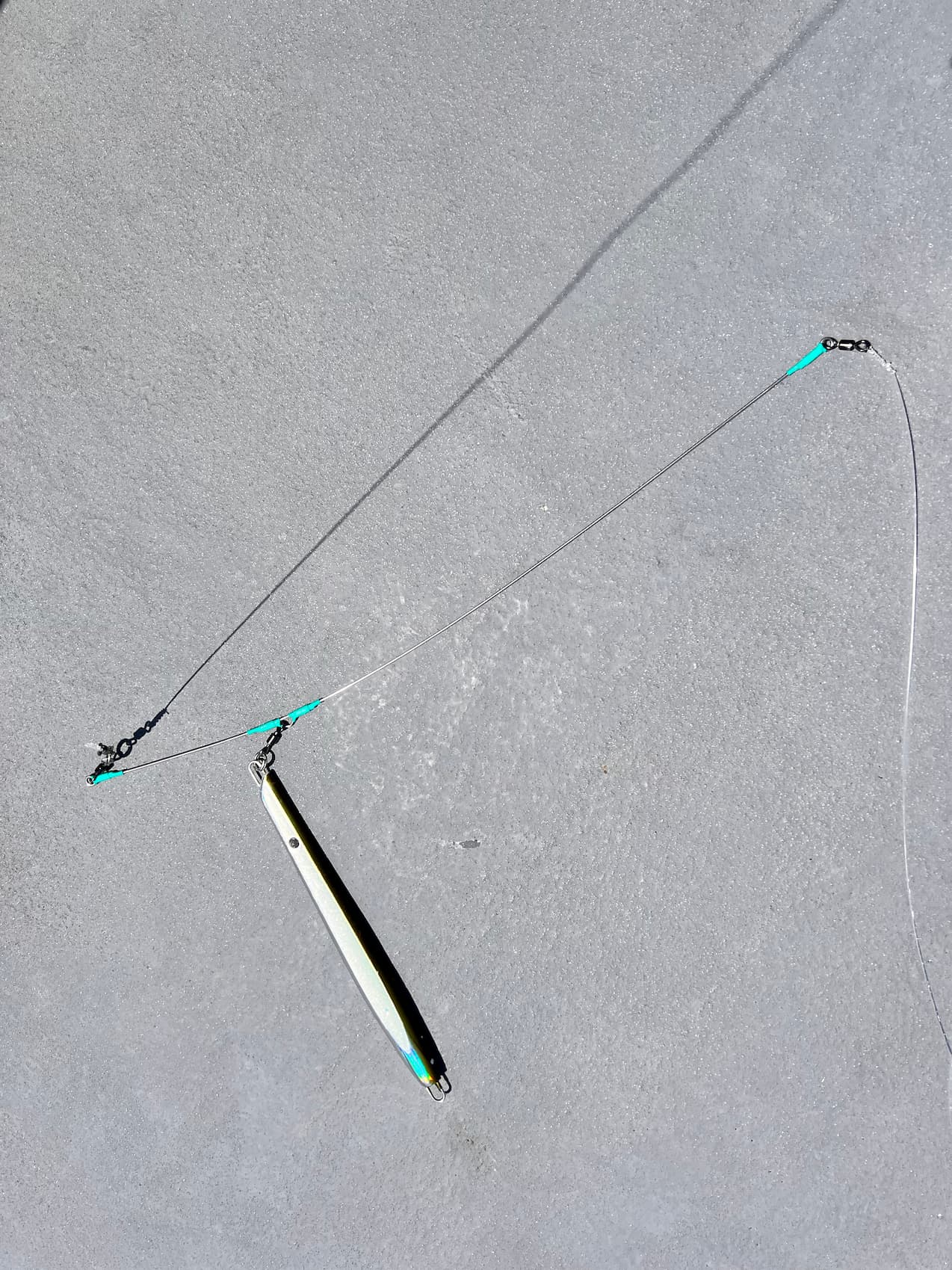
A straight balance is fitted with a halyard, a worm is attached to the hook, and it is probed by shimmying it.
The length of the line should be 2 fathoms (about 3 meters). If it is too short or too long, it will be difficult to handle when landing, so 2 fathoms is the best length. The ideal hooking condition is for the worm and line to be sucked into the mouth of the yellowfin tuna, and then to slide out as the fish reverses its direction and sticks into the hook. Therefore, considering the damage caused by yellowfin teeth, the standard line should be No. 22. The main line should be PE No. 4 or 5, the leader should be 60 or 80 lb, and the reel should be No. 8000 or 1000 class, as the line used should be able to reel 300 m. For the worm to be attached to the hook, we recommend using a worm specially designed for ebbing. Many anglers use two hooks, each with a different color.

Worms are often used with two hooks to emphasize appeal. Experiment with different color combinations, etc.
Ebbing Worm Ebbing Stick
https://www.daiwa.com/jp/product/wbxo53u
The rod to be used with this tackle can be either a jigging rod or a casting rod. However, considering a certain amount of shucking range and ease of handling after a hit, a rod in the 6- to early 7-ft. range is recommended. The Daiwa SOLTIGA brand has released a rod specially designed for ebbing under the supervision of Mr. Murakoshi, so be sure to check that out as well.
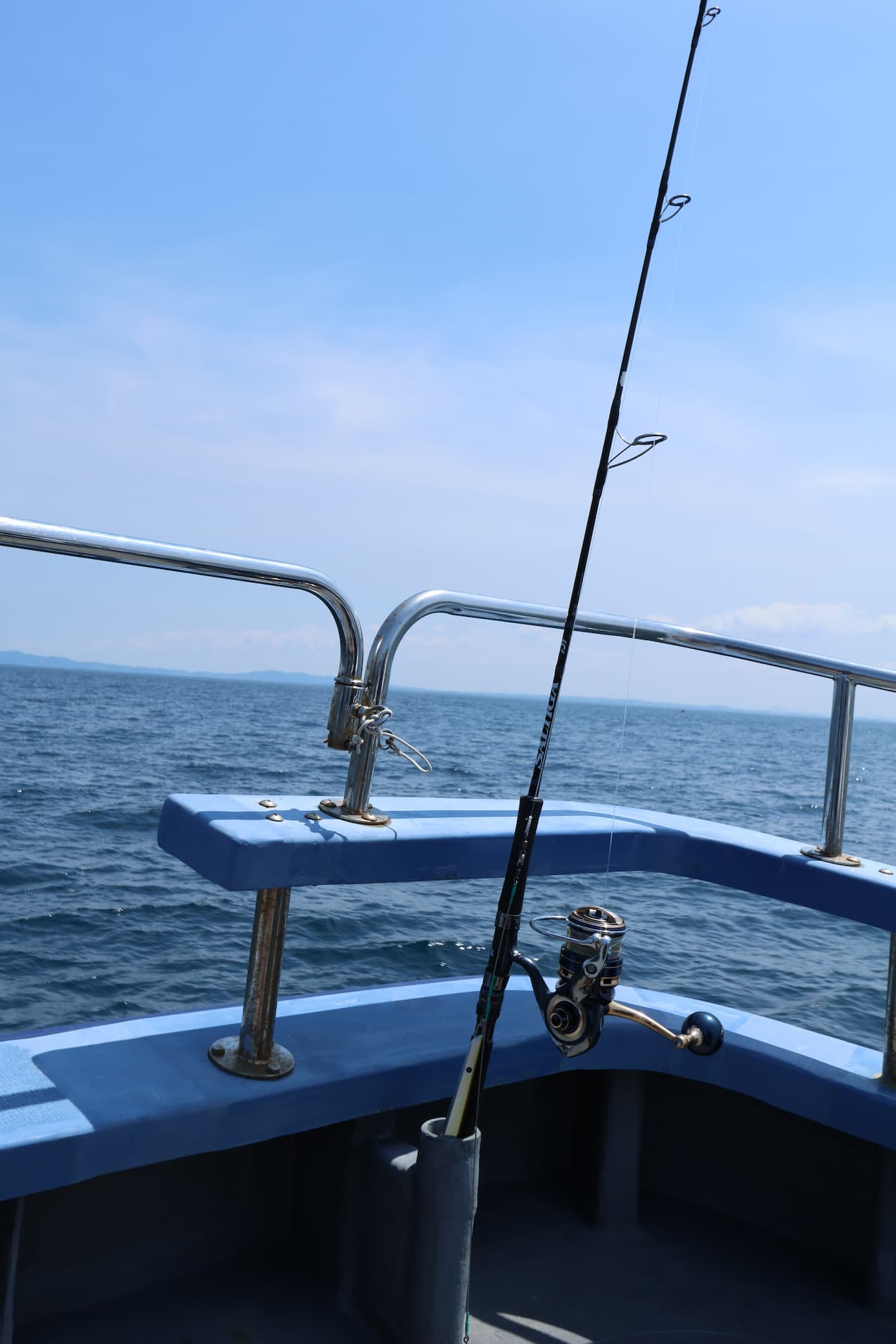
Saltiga Ebing
https://www.daiwa.com/jp/product/uxbmcmy
Arranging how to move the worm
The method of moving the worm in ebing is a repetition of a large shuck and a single rotation of the handle, but the speed at which the worm is moved may affect hit rates. When searching for a wide range of depths, a fast shaking tempo is sometimes better, while a slow shaking tempo is sometimes better when searching for a narrower depth. In some cases, the fish will bite by simply reeling in. We would like to try various methods to find the best pattern to catch fish.

As with jigging for skipjack, cast lightly under the water and cast in. However, ebbing requires a balance and a line, so you need to have a knack for it. When throwing, make sure the line is not tangled before dropping it in.
When you feel a hit or a strange sensation, immediately give a big hooking motion to hook the fish. Yellowfin tuna in the ebing area often swallow the worm and stay in the water. Therefore, if you do nothing, the fish will spit it out or fight without hooking firmly, leading to being caught. It is important to hook the hook two or three times strongly so that the hooking will be firm.
Once hooked, the yellowfin will run, so do not forcefully reel it in while it is running, but wait for it to stop. Once the fish stops, retrieve it while watching its movement. When the yellowfin flips up to 20 or 30 meters from the boat, reel it in carefully. The yellowfin come up spinning, so you have to be careful not to rub against the bottom of the boat and close the gap between you and the landing man to bring the yellowfin to the landing. If you are too slow, the sharks may kill you, so reel when you can, hold on when you can, and try to win in as short a time as possible.
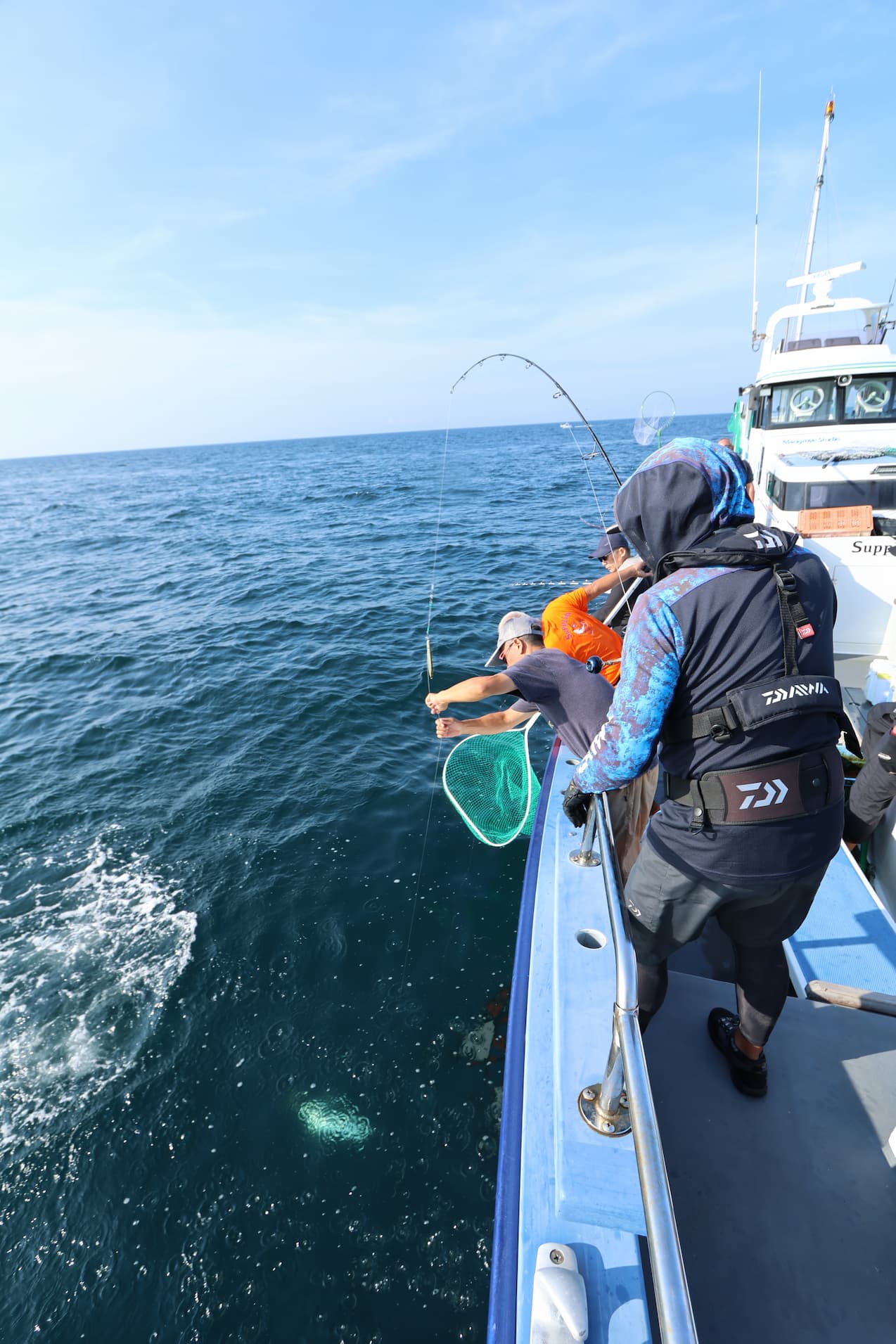
When landing, reel up to near the balance and land with the line. Therefore, the line should not be too long or too short.
Jigging and ebing in Sagami Bay this season 2024, as of early August, there are many good days, but as the season progresses, it is impossible to predict how skipjack and yellowfin tuna will respond to koma-sei and how the fish will migrate. When the fishing is good, it is a chance to move. If you don’t give it a try, you will never get started. We hope you will give it a try.
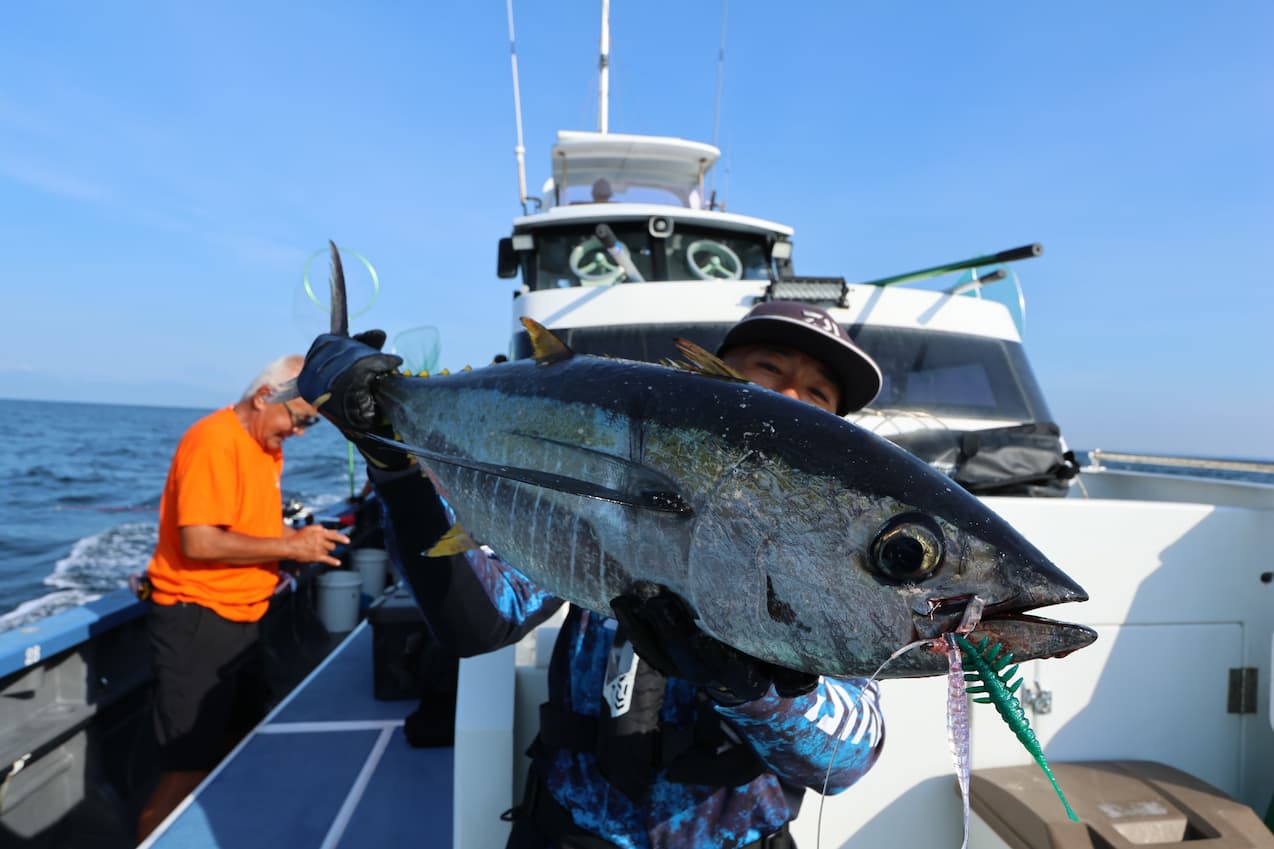
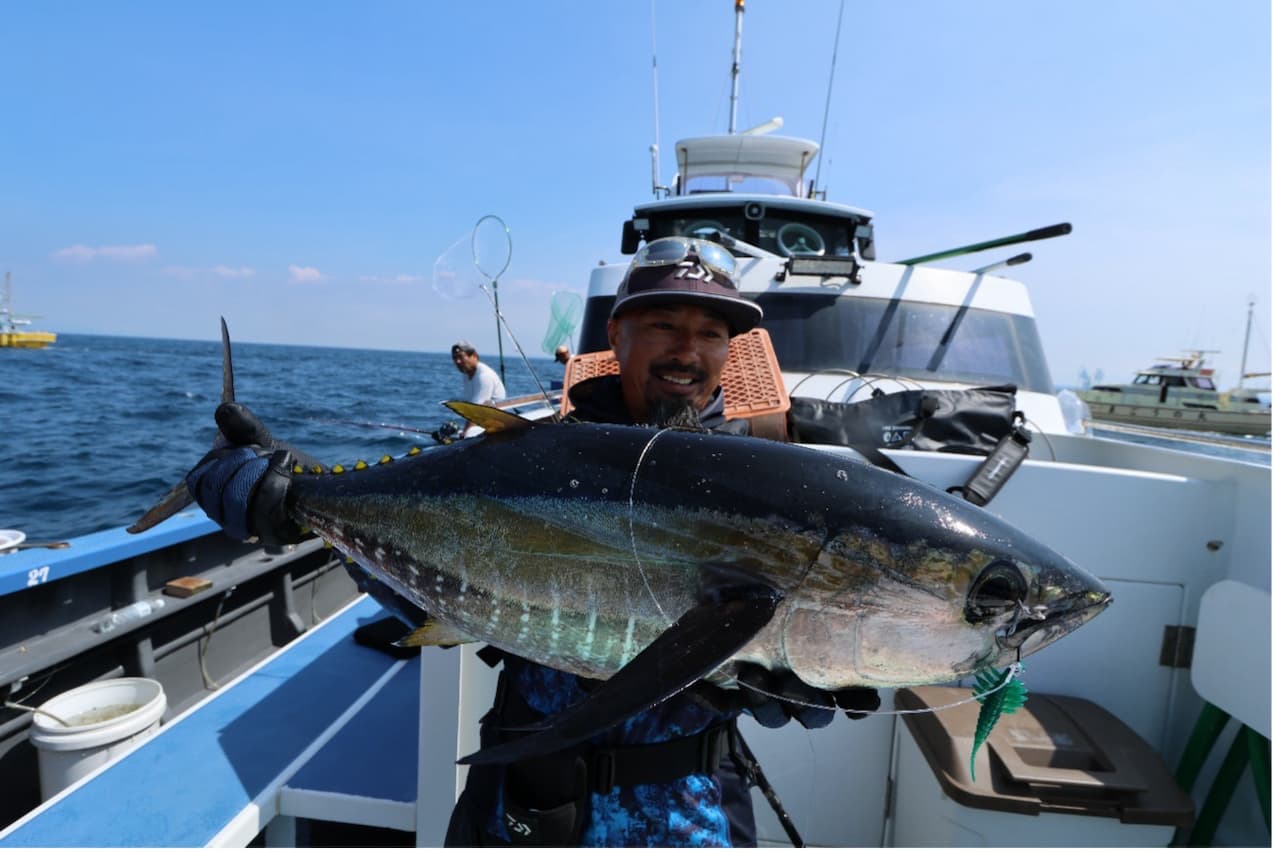
On the opening day on August 1, Mr. Kuriyama, a master ebbing fisherman on the same boat, caught two kimeji.
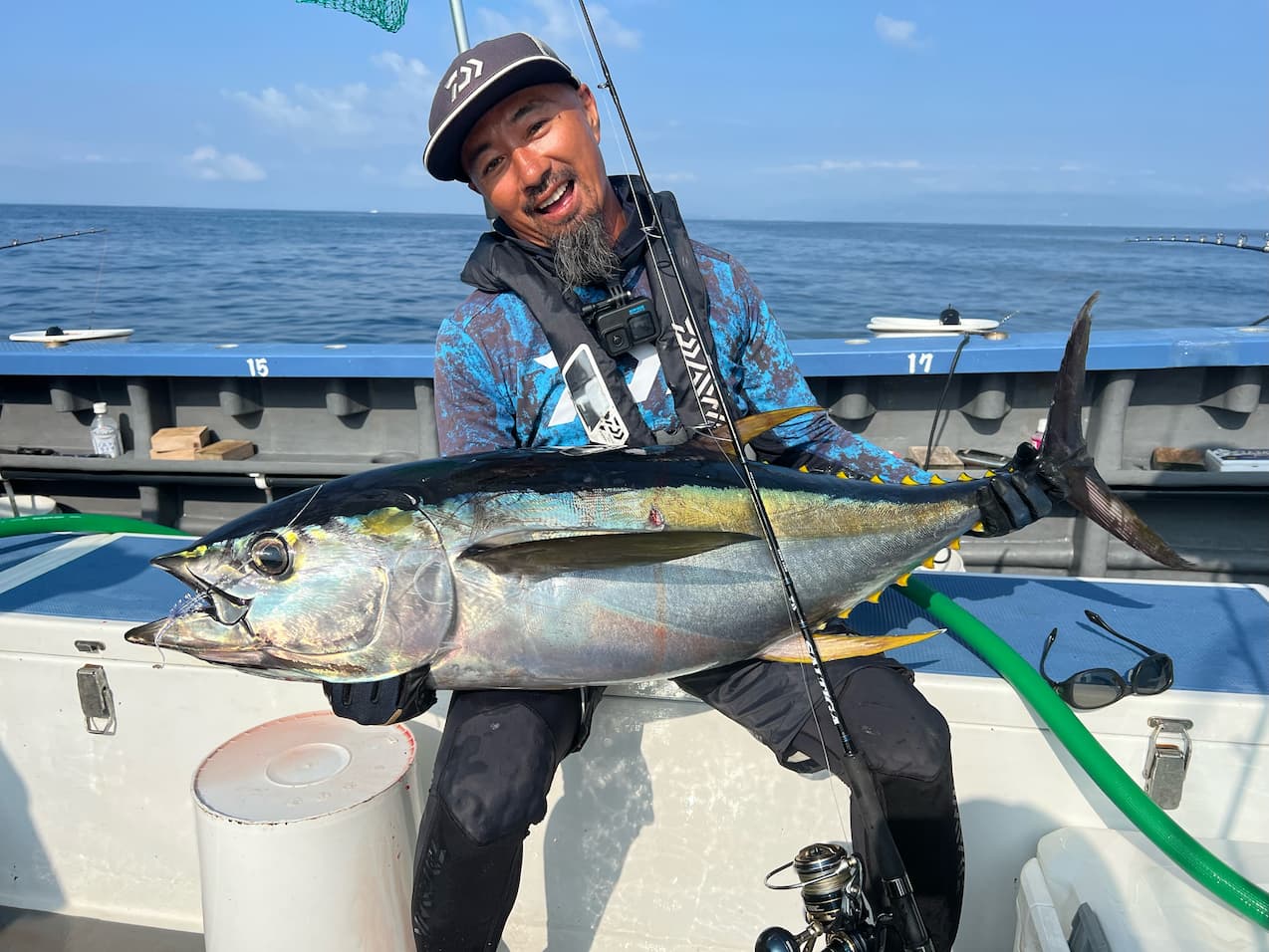
Mr. Kuriyama was on board again the next day. On this day, he caught a 20 kg class yellowfin tuna. Well done, Mr. Kuriyama! The season is still young.
Interview Cooperation & Fishing Boat
Shozaburomaru https://www.shouzaburo.com/
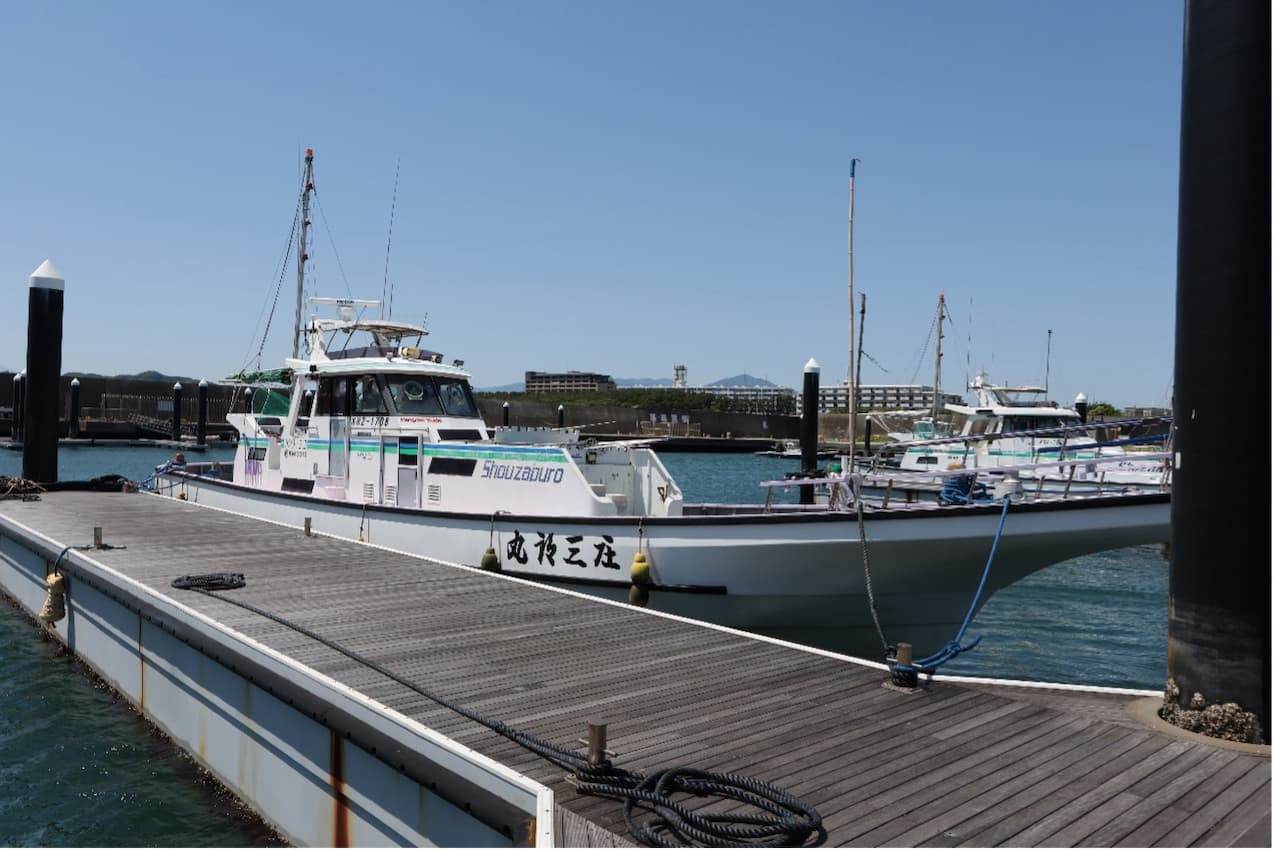
There is plenty of space on the Miyoshi, and we recommend the komase bonito & yellowfin tuna boats, as several of them sail out when the season is in full swing.





